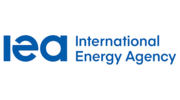News Release from International Energy Agency (IEA)
Wind Industry Profile of
Reaching international energy and climate goals requires a sharp acceleration in clean energy innovation
Without a major acceleration in clean energy innovation, countries and companies around the world will be unable to fulfil their pledges to bring their carbon emissions down to net-zero in the coming decades, according to a special report released today by the International Energy Agency.
The report assesses the ways in which clean energy innovation can be significantly accelerated to achieve net-zero emissions while enhancing energy security in a timeframe compatible with international climate and sustainable energy goals. The Special Report on Clean Energy Innovation is the first publication in the IEA’s revamped Energy Technology Perspectives (ETP) series and includes a comprehensive new tool analysing the market readiness of more than 400 clean energy technologies.
“There is a stark disconnect today between the climate goals that governments and companies have set for themselves and the current state of affordable and reliable energy technologies that can realise these goals,” said Dr Fatih Birol, the IEA Executive Director. “This report examines how quickly energy innovation would have to move forward to bring all parts of the economy – including challenging sectors like long-distance transport and heavy industry – to net-zero emissions by 2050 without drastic changes to how we go about our lives. This analysis shows that getting there would hinge on technologies that have not yet even reached the market today. The message is very clear: in the absence of much faster clean energy innovation, achieving net-zero goals in 2050 will be all but impossible.”
A significant part of the challenge comes from major sectors where there are currently few technologies available for reducing emissions to zero, such as shipping, trucking, aviation and heavy industries like steel, cement and chemicals. Decarbonising these sectors will largely require the development of new technologies that are not currently in commercial use. However, the innovation process that takes a product from the research lab to the mass market can be long, and success is not guaranteed. It took decades for solar panels and batteries to reach the stage they are at now. Time is in even shorter supply now.
Notably, the report highlights the importance of making sure crucial clean energy solutions are ready in time for the start of multi-decade investment cycles in key industries. Doing so could create huge markets for new technologies and avoid locking in vast amounts of emissions for decades to come. If key technologies become available by 2030 to take advantage of the next round of plant refurbishments in heavy industry, nearly 60 gigatonnes of carbon emissions could be avoided.
Another issue is that many of the clean energy technologies that are available today – such as offshore wind turbines, electric vehicles and certain applications of carbon capture, utilisation and storage – need a continued push on innovation to bring down costs and accelerate deployment.
Around three-quarters of the cumulative reductions in carbon emissions that would be needed to move the world onto a sustainable path would come from technologies that have not yet reached full maturity, according to the IEA report. For example, it would require rapid progress in new battery designs that are still at the prototype stage now to shift long-distance transport from fossil fuels to electricity.
But the public and private sectors are currently falling short of delivering the innovation efforts to back up their net-zero ambitions – and the Covid-19 crisis is threatening to further undermine projects around the world focused on developing vital new energy technologies.
“A recent IEA survey revealed that companies that are developing net-zero emissions technologies consider it likely that their research and development budgets will be reduced, a clear sign of the damage that the Covid-19 crisis could do to clean energy innovation,” Dr Birol said. “Now is not the time to weaken support for this essential work. If anything, it is time to strengthen it.”
To help guide policy makers at this challenging time, the IEA report offers five key innovation principles for governments that aim to deliver net-zero emissions while enhancing energy security:
- Prioritise, track and adjust. Review the processes for selecting technology portfolios for public support to ensure that they are rigorous, collective, flexible and aligned with local advantages.
- Raise public R&D and market-led private innovation. Use a range of tools – from public research and development to market incentives – to expand funding according to the different technologies.
- Address all links in the value chain. Look at the bigger picture to ensure that all components of key value chains are advancing evenly towards the next market application and exploiting spillovers.
- Build enabling infrastructure. Mobilise private finance to help bridge the “valley of death” by sharing the investment risks of network enhancements and commercial-scale demonstrators.
- Work globally for regional success. Co-operate to share best practices, experiences and resources to tackle urgent and global technology challenges, including via existing multilateral platforms.
In particular, the report highlights issues requiring immediate attention in the context of the Covid-19 crisis, such as the importance of governments maintaining research and development funding at planned levels through 2025 and considering raising it in strategic areas. It stresses that market-based policies and funding can help scale up value chains for small, modular technologies with overlapping innovation needs like new types of batteries and electrolysers, significantly advancing their progress.
“Together with the Sustainable Recovery Plan that the IEA presented last month, this innovation report will provide the foundation for the IEA Clean Energy Transitions Summit on 9 July,” Dr Birol said. “The Summit will be the most important global event on energy and climate issues of 2020, bringing together more than 40 government ministers, industry CEOs and other energy leaders from countries representing 80% of global energy use and emissions. The aim is to build a grand coalition to help drive economic development and job creation by accelerating transitions towards clean, resilient and inclusive energy systems.”
- Source:
- IEA
- Author:
- Press Office
- Link:
- www.iea.org/...
- Keywords:
- IEA, CO2, emission, carbon dioxide, research, development, global, net zero, innovation




























